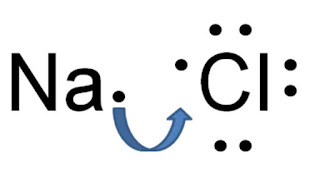The times that we live in are strange. The narratives suited to the world are well ingrained right from the childhood, through movies, books, ‘Adult’ conversations and beliefs. Which is why most of these remain unchallenged throughout our lives, till we encounter a small optional turn in the road somewhere which has a sign that says - Try this route this time, maybe. And that’s when some of the rethinking happens. Like this.
One of the narratives we have gotten comfortable with over time is that finding a partner or even a friend is like finding missing pieces of a jigsaw puzzle from the same box. It is the quest of One who will fit, right there, perfectly, like nothing had ever fit better before. Someone who will complete the picture and rekindle the joy of living and fruition of this very quest. Just that one piece, that will make every thing right from there on. That one piece of our individual jigsaw puzzle. Makes sense!
Makes sense, completely, but then is this all of it? Is this all that any relationship needs? Seeking a partner who fits? Is that how humans operate in practical world? Here I am not referring to an ideal state but to a more plausible (read practical) state. The actual state of affairs if I may take liberty to say so. And thus my hypothesis is slightly different. I equate human relationships with the concept of Valency and best illustrated through Lewis Dot Diagram, back from our Chemistry days.
But to begin with what is Valency and Lewis Dot Diagram. The combining capacity of an atom or group to form a compound is known as its valency. So the valency of Sodium is 1 and valency of Chlorine is -1 and thus they can combine to form a stable compound NaCl, more commonly known as Common Salt, stable enough to to consume. Lewis Dot Diagram is how this combination is represented pictorially.
Image Credit : Off Google search
To make it clearer, Super-active Sodium with 1 extra electron in it’s last orbit gives it to Super-active Chlorine which has 7 electrons in the last orbit which makes them both have 8 electrons each in their respective last orbits and the combined compound NaCl is thus Super-stable.
Quite straightforward to understand and put to practice if we draw a parallel to relationships. In most relationships, where we seek that one missing piece of jigsaw puzzle, the problem is that it is too specific a quest and too momentous a burden on just that one piece. The expectations are unreal and so the outcomes rarely live up to them. Also pictures formed through a jigsaw puzzle are stable only till they are on terra firma. In principle they are still individual loose piece which are meaningless individually. Not a great feeling at all. Mostly is relatable also.
That does not hold true with stable compounds that are formed with exchange of electrons. The responsibilities are shared and so is the gravity of partnership. The stability is at the highest because the very reason these were formed in the first place was because there was an innate desire in both the elements (or group of atoms) to lose hyperactivity and be stable. And while doing so, ensuring that the outcome is more useful to world in general and them in particular.
But at the very beginning of this text I also asserted that this is also a more plausible approach, a practical one at that. This assertion is because it does not ignore completely the influence of external forces. Change in circumstances such as heat, electrolysis or polar solvents can break the bond of NaCl for that matter, though it is a Super-strong bond, even from chemical standards. H2O, i,e, water, breaks down much more easily. Depends on the strength of the bond and external circumstances mostly.
But this theory allows for the provision of some bonds getting weaker and open to reacting with other elements or compounds over time. Which is when the strength of the bonds is tested. Some elements fleet through their life and still do not end up finding a partner with who they can form a long lasting stable bond, some settle down quick, some flip from time to time. I have come to believe that all human types are covered well within the Mendeleev’s table.
But then ofcourse this is one way of looking at it. I am sure there are numerous other ways to look at relationships and no one one way is right. Somehow I relate much better to Science than Heresy and thus the need to put this blog down for me to keep coming back to it and refresh if there is a change in how I feel about it many decades later. Having said that, if you are reading it right now, do ping up to discuss your viewpoints. Would love to know your sentiments on this.
~ #IcarusSays
